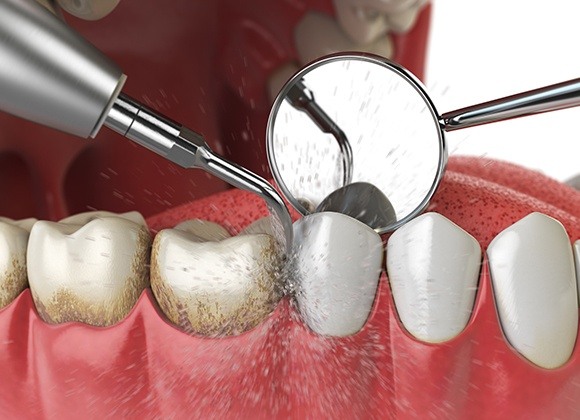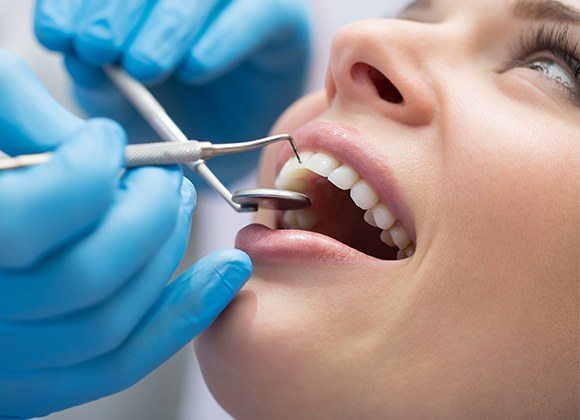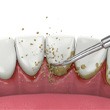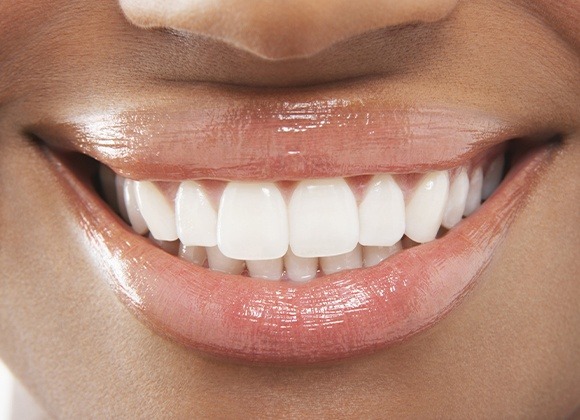Periodontal Therapy – Waverly, IA
Fighting Gum Disease, Saving Smiles
Periodontal (gum) disease is the most common condition affecting American adults, with almost half the population exhibiting some level of the disease. Left untreated, periodontitis can wreak havoc on your oral and overall health. Dr. Jonathan Smiley and his team provide much-needed periodontal therapy for Waverly, IA and surrounding areas. What is gum disease? How is it treated? Keep reading to learn the answers to these and other questions from your dentist in Waverly here at Smiley Family Dentistry.
Why Choose Smiley Family Dentistry for Periodontal Therapy?
- Compassionate Dentist with Years of Experience
- Judgment-Free Dental Office
- Skilled Team of Dental Professionals
Periodontal Disease: An Overview

Gum disease is an infection in the gums that occurs when the bacteria in plaque and tartar makes a home between the teeth and gums, forming pockets that eat away at healthy periodontal tissue. Gum disease can affect patients of all ages, but it is most common in older adults and people who smoke or do not maintain proper dental hygiene.
The warning signs of gum disease include the following:
- Red, swollen, tender gums
- Gums that bleed
- Receding gums
- Tooth sensitivity
- Loose or shifting teeth
- Persistent bad breath or bad taste in the mouth
If you suspect that you are dealing with infected gums, do not hesitate to seek a solution from our team at Smiley Family Dentistry. Left untreated, gum disease takes a toll on an otherwise healthy body. In its latest stages, tooth loss is likely. Heart problems, respiratory issues, memory loss, certain types of cancer, and premature birth/low birth weight have all been linked to gum disease.
How Is Gum Disease Treated?

In the earliest stages, gum disease is reversible with improved dental hygiene at home and additional cleanings at Smiley Family Dental. Once the periodontal pockets that occur with gum disease have reached a certain depth, we may recommend scaling and root planing, or a deep cleaning.
Once gum disease has progressed to the latest stages, your dentist may recommend surgical treatment. If so, we can partner with a trusted local surgeon to ensure you receive the most expert care for your gum disease therapy.
Scaling & Root Planing

Two of the most common ways to address periodontal disease are scaling and root planing. Scaling is a non-surgical treatment that removes the bacteria that cause gum disease, and then root planing smooths the tooth root to prevent spaces where reinfection could occur. This treatment can also be combined with antibiotic treatment applied directly to the infection. The treatment is usually carried out over several appointments for full healing. Read on to learn more about this essential method for protecting your gums and preserving your oral health.
Do I Need Scaling & Root Planing?

In most cases, we’ll likely suggest undergoing scaling and root planing if you have an advanced case of periodontal disease. This can often involve experiencing symptoms like persistent bad breath, bleeding, receding gums, difficulty chewing, shifting teeth, and visible plaque along the gum line. If you’ve noticed any of these signs, make sure to contact our team for help right away. We can evaluate your situation and determine if scaling and root planing can help resolve the issue, depending on the severity of the infection. Getting preventive treatment is essential for maintaining great oral health.
The Process of Scaling & Root Planing

To treat advanced gum disease, we typically begin by removing the bacteria causing the infection via several scaling and root planing appointments. The first step is scaling, which is meant to get rid of any calcified plaque (tartar) beneath and above the gum line.
Once we’ve performed this part of the process, we’ll move on to root planing, which is when we smooth out the tooth roots that are exposed. This procedure promotes proper reattachment of the receded gum tissue to the teeth as well as reducing the chances of bacteria settling in the area later on.
Aftercare Tips for Scaling & Root Planing

After you’ve completed the procedure, you’ll most likely feel some tenderness, soreness, or mild discomfort. Your gums might also experience some bleeding or swelling, and your teeth may be sensitive for some time. Fortunately, this can easily be managed by taking over-the-counter/prescribed pain medications.
The most important part of your aftercare journey is infection control, as you won’t want any bacteria to be reintroduced along the gum line. That’s why we’ll provide specific aftercare instructions, including brushing and flossing, rinsing with mouthwash, and taking an antibiotic. You should also avoid eating particularly hot, spicy, or sharp foods until you’ve finished healing.
Gum Disease Prevention

After we have completed your periodontal disease treatment, stay on top of your good dental hygiene habits to prevent reinfection. Make sure you are brushing your teeth for two minutes, after each meal or at least twice daily. Floss daily and stay away from tobacco products to keep your oral and overall health strong for years to come.
Learn More About Gum Disease Prevention
Request an Appointment Today!

We can keep gum disease at bay with regular checkups and cleanings. Routine visits also allow us to catch the warning signs of infection early, while the easiest treatment is still possible! When was your last visit to Smiley Family Dental? We are the team you’re looking for when you search for a “dentist near me.” Request an appointment today!
